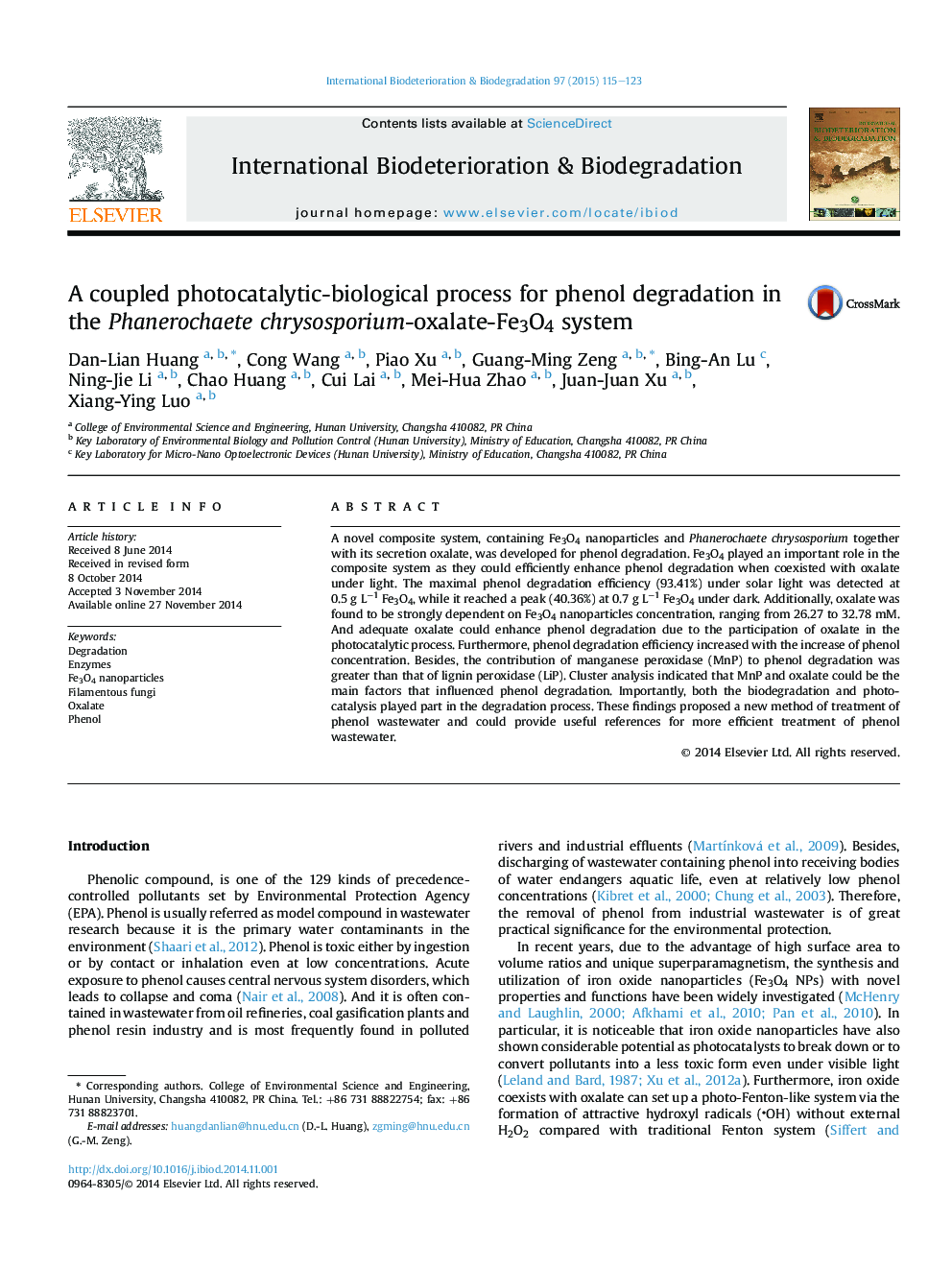| Article ID | Journal | Published Year | Pages | File Type |
|---|---|---|---|---|
| 4364674 | International Biodeterioration & Biodegradation | 2015 | 9 Pages |
•Pc-oxalate-Fe3O4 system was developed for phenol degradation.•Effect of Fe3O4 NPs and phenol amount on phenol degradation were investigated.•Dynamic changes of ligninolytic enzymes activities and oxalate were detected.•Phenol degradation occurred via the coupled photocatalytic-biological process.
A novel composite system, containing Fe3O4 nanoparticles and Phanerochaete chrysosporium together with its secretion oxalate, was developed for phenol degradation. Fe3O4 played an important role in the composite system as they could efficiently enhance phenol degradation when coexisted with oxalate under light. The maximal phenol degradation efficiency (93.41%) under solar light was detected at 0.5 g L−1 Fe3O4, while it reached a peak (40.36%) at 0.7 g L−1 Fe3O4 under dark. Additionally, oxalate was found to be strongly dependent on Fe3O4 nanoparticles concentration, ranging from 26.27 to 32.78 mM. And adequate oxalate could enhance phenol degradation due to the participation of oxalate in the photocatalytic process. Furthermore, phenol degradation efficiency increased with the increase of phenol concentration. Besides, the contribution of manganese peroxidase (MnP) to phenol degradation was greater than that of lignin peroxidase (LiP). Cluster analysis indicated that MnP and oxalate could be the main factors that influenced phenol degradation. Importantly, both the biodegradation and photocatalysis played part in the degradation process. These findings proposed a new method of treatment of phenol wastewater and could provide useful references for more efficient treatment of phenol wastewater.
